With a garage-sale fishing rod, a can of worms, and a fishing license (if required), any kid in America can legally go fishing. Add a hand-me-down shotgun, a hunter safety course, a pocket full of shotgun shells, and he or she can go hunting too. And when that kid gets afield, he or she will find well-managed and abundant fish and wildlife populations as well as public hunting grounds and water access.
We take this access to game and grounds for granted. But our country is like no other in the way we manage fish and wildlife.
What started out as a rebellion against royal privilege resulted in a science of fish and wildlife management. This model reversed a century of wildlife exploitation, restored once-threatened species, and created legions of supporters from every background and economic class who are willing to pay for conservation. It is known as the North American Model of Wildlife Conservation, named as such by Canadian wildlife biologist Dr. Valerius Geist, and is (to date) the heart of the most effective model for wildlife conservation on the planet.
It Was Good To Be King
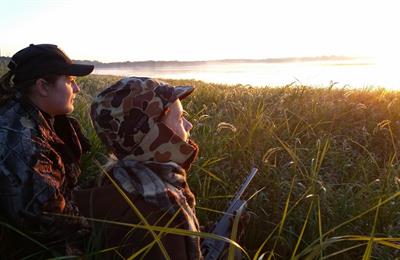
The idea that natural things should belong to all people is an old concept, first documented in Roman times. In the sixth century, Roman civil law texts stated, “By the law of nature, these things are common to all mankind: the air, running water, the sea, and consequently the shores of the sea.” However, this concept of public ownership did not last.
After the Norman conquest of England in 1066, wild game became the property of the English King. This system officially lasted until the Magna Carta was extracted from King John in 1215, but it actually continued much longer. The King was charged with owning all wildlife, holding it in “sacred trust” for the people. In reality, the people for whom the King held wildlife in trust were not the common man but those who owned land and were otherwise part of the aristocracy. Only the wealthy could hunt, and wildlife became de facto private property — whomever owned the land owned the animals and controlled who (if anyone) could hunt them.
European nobles forbade trespassing in Royal Forests and the carrying of weapons. Those who failed to obey these dictates were often punished in cruel fashion — buried alive beneath mounds of rocks, sewn into the carcass of a deer to be torn apart by dogs, or death at the gallows. Taking a wild animal, even to feed a starving family, became a crime.
Europeans who immigrated to North America rejected this approach and declared that the wildlife they found here belonged to all people. The Plymouth Colony enacted a provision in 1623 that “hunting and fishing were free to all members of the colony.” If you starved on this side of the Atlantic, it wasn’t because anyone kept you from hunting or fishing.
Unfortunately, this free-for-all had dire consequences for wildlife.
From Wonder to Plunder
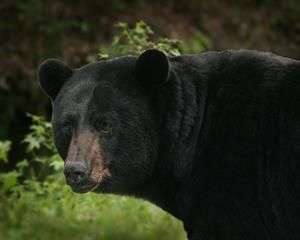
When Europeans settled North America, they found a landscape abundant with fish and wildlife. But as the settlers cleared forests, tilled land, and hunted and fished for subsistence, wildlife populations began to dwindle. Each region of the continent faced the same chain of events as immigrants pushed westward.
Still, while most people lived off the land, most wildlife was safe from extirpation (local extinction). It wasn’t until populations swelled in urban areas — 20 percent of U.S. residents were living in cities by the mid-1800s — that large-scale exploitation of wildlife occurred. The combination of a growing urban population and a growing class of wealthy industrialists led to the commercialization of wildlife, both as a source of food and for trinkets in the form of feathers and furs. A rapidly expanding railway system aided in this destruction, allowing market hunters to send tons of food encased in ice to market and to fill boxcars with other goods.
The demand for wild game as food was so great that as each new territory was opened, the animals and birds it could produce were rapidly absorbed into the nation’s food system. Early ornithologist Daniel G. Elliot, then studying America’s game birds, wrote in 1864 that “the reason why so many are to be seen at once (in urban markets) is not that their numbers have become greater anywhere in the United States but because the facilities for transporting them have increased, and now birds killed in Minnesota can be brought to New York perfectly fresh and fit for the trade during the winter months, and when packed in ice, in the summer also.” Elliot discovered some startling statistics when he studied the receipts of corporations selling game. For instance, he learned that one New York firm received 20 tons of prairie chickens in one consignment in one day. Speculating that the birds might weigh two pounds apiece, Elliot figured that there were 20,000 prairie chickens in that one shipment alone.
Not all of the plunder headed as far east as New York. Great amounts of wild game from the northern forests and Great Plains was funneled into Chicago, St Louis, and the Twin Cities. Railroad statistics for November and December 1877, for example, show that more than 7,400 venison saddles and carcasses were handled in St. Paul and another 4,000 pounds of venison hams were delivered there in addition to 50 bear carcasses, 3,200 pounds of rabbits, and “birds in barrels” weighing a total of 25,810 pounds. All that game in just two months!
Ducks, geese, swans, pigeons, grouse, bear, elk, buffalo, and deer all found their way to urban markets. And it wasn’t because they were a cheap source of food. Americans had a taste for wild game — and were willing to pay for it. In 1874, while beef was advertised in New York at 41/2¢ per pound and ham at 11¢ per pound, venison from Minnesota was selling from 20¢ to 30¢ per pound. It was a lucrative business — and unsustainable.
By the late 1800s, Americans had pushed west as far as they could go — and pushed wildlife farther. Populations of bison, elk, and moose could no longer be considered viable. The plains, mountains, and forests were growing empty except for the grisly remains of this entrepreneurship.
However, early efforts to conserve wildlife were largely unsuccessful due to lack of public support. In most Americans’ minds, the myth of never-ending natural resources still flourished. Although it was generally acknowledged that wildlife belonged to all people, there was little clear legal ground for who, if anyone, held the right and responsibility for regulating its harvest.
That changed thanks to a lowly oyster.
An Evolving Ethos
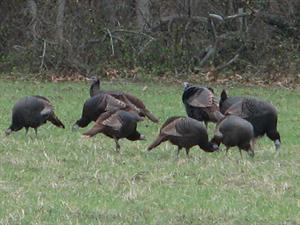 Public ownership of wildlife was first upheld in Martin v. Waddell (1842), in which the U.S. Supreme Court denied a landowner’s effort to stop people from taking oysters from New Jersey tidal mudflats that he claimed as private property. This decision was reinforced and expanded upon by court cases that followed, the most significant being Geer v. Connecticut (1896), which dealt with the transport of game across state boundaries. This ruling held that not only do fish and wildlife belong to the public but that the management and stewardship of those resources are vested to the government, primarily (but not exclusively) to the individual states, which determine when and how fish and wildlife should be taken and transported. Combined, the rulings codified the concept of what is now called the Public Trust Doctrine, which holds that certain resources are reserved for the public and that government should manage them on behalf of the public.
Public ownership of wildlife was first upheld in Martin v. Waddell (1842), in which the U.S. Supreme Court denied a landowner’s effort to stop people from taking oysters from New Jersey tidal mudflats that he claimed as private property. This decision was reinforced and expanded upon by court cases that followed, the most significant being Geer v. Connecticut (1896), which dealt with the transport of game across state boundaries. This ruling held that not only do fish and wildlife belong to the public but that the management and stewardship of those resources are vested to the government, primarily (but not exclusively) to the individual states, which determine when and how fish and wildlife should be taken and transported. Combined, the rulings codified the concept of what is now called the Public Trust Doctrine, which holds that certain resources are reserved for the public and that government should manage them on behalf of the public.
While the courts were laying this foundation, the American people were exercising their right to be heard on how wildlife was to be managed. The devastation caused by unregulated hunting and rapid habitat loss had not gone unnoticed by hunters across the United States. At the same time, comparable concerns were being raised in Canada, where immigrants shared the same long memories of how harshly commoners had been treated for hunting or fishing without royal permission. This fortunate coincidence would lead to wildlife management on a continental scale, something that had never before been practiced nor even conceived.
Great thinkers and leaders spurred the conservation ethic into full gallop. George Bird Grinnell, a Yale-educated naturalist who became the owner and editor of the sporting journal Forest and Stream, launched a campaign for conservation and ethical hunting. He became friends with a young fellow New Yorker, Theodore Roosevelt, and together they escalated the efforts to provide the nation’s young with what they deemed as wholesome, necessary, outdoor experiences by promoting hunting, fishing, and camping and providing public areas to engage in these experiences. In doing so, they also built a constituency that would embrace conservation.
Action and Science
From this point on, rapid progress was made toward a working conservation model. States and provinces hired wardens and created game seasons and limits. In 1900, Congressman John Lacey of Iowa drafted the Lacey Act, which put an end to the transport of illegally taken wildlife across state borders. During his two terms as president (1901-1909), Theodore Roosevelt expanded America’s national forests and other protected areas totaling more than 230 million acres, which secured a place for the common people to hunt and fish and a habitat base for fish and wildlife. In 1913, Pennsylvania became the first state to issue hunting licenses. The Migratory Bird Treaty of 1916 between the U.S. and Canada protected birds from egg and nest collectors and unregulated hunting. It was the first international treaty anywhere for the protection of wildlife.
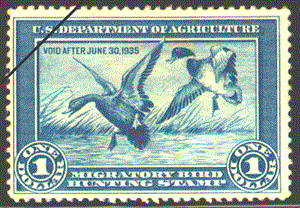 The “duck stamp” was authorized by Congress in 1934 — the first time in history that hunters demanded that they be taxed for the benefit of natural resources. With concern came the need for implementation, and early conservationists recognized the need for science-based, professional wildlife management. The ability to train new wildlife managers prospered thanks to the passage of the 1937 Federal Aid in Wildlife Restoration Act (commonly known as the Pittman-Robertson Act), which taxed sales of firearms and ammunition and returned the money to the states for wildlife management and research.
The “duck stamp” was authorized by Congress in 1934 — the first time in history that hunters demanded that they be taxed for the benefit of natural resources. With concern came the need for implementation, and early conservationists recognized the need for science-based, professional wildlife management. The ability to train new wildlife managers prospered thanks to the passage of the 1937 Federal Aid in Wildlife Restoration Act (commonly known as the Pittman-Robertson Act), which taxed sales of firearms and ammunition and returned the money to the states for wildlife management and research.
The very science of wildlife management had its roots in this period. Aldo Leopold became the first professor of wildlife management when his position at the University of Wisconsin was created in 1933. During that same year, his prescient book, Game Management, was published. In 1935, the Cooperative Research Unit program was established to provide graduate education in fisheries and wildlife management and foster research.
A book could, and should, be written on the remarkable reversals of fortune for wildlife from this point on in North American history. Some species on the brink of extirpation have since recovered to levels that in some cases rival their numbers at the time of the first European settlement. Huntable populations, managed sustainably, provide food and recreation for millions of people and are the basis for thriving industries that support jobs for tens of thousands of Americans and Canadians.
Seven Pillars of Wildlife Management
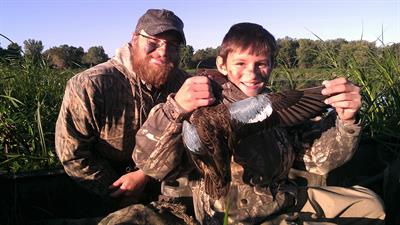 Even though this conservation model has been evolving for more than a hundred years — and has been in practice much as it is today since the 1930s — it wasn’t until recently that it became widely known as the North American Model of Wildlife Conservation. Dr. Valerius Geist, along with fellow Canadian wildlife biologist Shane Mahoney and the U.S. Fish and Wildlife Service’s John Organ, have been credited with formalizing the concept of the North American Model, which they presented at a wildlife professional conference in 2001.
Even though this conservation model has been evolving for more than a hundred years — and has been in practice much as it is today since the 1930s — it wasn’t until recently that it became widely known as the North American Model of Wildlife Conservation. Dr. Valerius Geist, along with fellow Canadian wildlife biologist Shane Mahoney and the U.S. Fish and Wildlife Service’s John Organ, have been credited with formalizing the concept of the North American Model, which they presented at a wildlife professional conference in 2001.
The model, as they have set forth, is built upon seven pillars:
- Wildlife is public property. The government holds wildlife in trust for the benefit of all people.
- Wildlife cannot be slaughtered for commercial use. This principle eliminates trafficking in game animals.
- Wildlife is allocated by law. Every citizen in good standing — regardless of wealth, social standing, or land ownership — is allowed to participate in the harvest of fish and wildlife within guidelines set by state and federal governments.
- Wildlife shall be taken by legal and ethical means, in the spirit of “fair chase” and with good cause. Animals can be killed only for legitimate purposes — for food and fur, in self-defense, or for protection of property.
- Wildlife is an international resource. As such, hunting and fishing shall be managed cooperatively across state, provincial, and national boundaries.
- Wildlife management, use, and conservation shall be based on sound scientific knowledge and principles.
- Hunting, fishing, and trapping shall be democratic. This gives all persons — wealthy and poor, landowner and non-landowner alike — the opportunity to participate.
Public ownership of wildlife “prevents the inevitable consequence of private ownership, such as the domestication of wildlife as well its genetic alteration to fit market whims,” explains Geist. It also discourages the genetic pollution that can impact wildlife when genetically altered animals escape into the wild. Public wildlife allows for management across boundaries by trained professionals with significant public involvement.
Perhaps the most significant pillar is that wildlife is allocated to the public by law.
“Because all citizens in good standing have access to wildlife as prescribed by law,” writes Geist, “it removes wildlife from any image of elitism, or as the plaything of the filthy rich, a symbol of privilege. Wildlife controlled privately by an elite [group] can become a symbol of the hated elite and suffer the consequences. This policy, by encouraging citizens to regard wildlife as their own, generates large national and continental organizations of citizen who join together into societies on behalf of wildlife.”
The remaining pillars, while not perfect in execution, are still a vast improvement over how wildlife is managed elsewhere. For instance, the “fair chase” clause is clearly not applied uniformly to all wildlife — witness “rattlesnake roundups” and the use of prairie dogs as targets. We still have work to do.
In fact, that is one of the main points that wildlife managers are stressing today: the North American Model of Wildlife Management, as successful as it is, is not carved in stone and is continuing to evolve. It is also one part of a much broader framework of ethics, laws, and policies on wildlife and habitat management. But its strengths far outweigh its weaknesses, especially when compared to how wildlife is managed elsewhere around the globe.
It Could Have Been Different
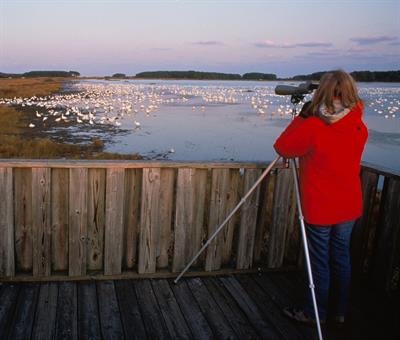 If we take for granted that a young girl can grab a fishing rod and catch a bluegill, that grizzly bears still roam the west, that white-tailed deer are abundant and provide not just wholesome recreation but tons of healthy food to millions of Americans, we also take for granted that this abundance and opportunity is borne upon the back of hunters and anglers. Although sportsmen and women have always been the strength of this system, willing to pay for it through taxes and licenses and through public advocacy, it is a system that faces challenges and is poorly understood by the general public.
If we take for granted that a young girl can grab a fishing rod and catch a bluegill, that grizzly bears still roam the west, that white-tailed deer are abundant and provide not just wholesome recreation but tons of healthy food to millions of Americans, we also take for granted that this abundance and opportunity is borne upon the back of hunters and anglers. Although sportsmen and women have always been the strength of this system, willing to pay for it through taxes and licenses and through public advocacy, it is a system that faces challenges and is poorly understood by the general public.
We also take for granted that our system was inevitable and will remain much as it is today. Neither assumption is true.
There was no over-riding intellect guiding the creation of the North American Model — it evolved largely by happenstance. A different court ruling here or the absence of one or two key leaders there, and things might have been quite different. It is hard to imagine, for instance, that in today’s political climate, folks would support the concept of wildlife management by government agencies were the idea being proposed for the first time.
In fact, wildlife management elsewhere has taken different paths. In 2012, an interesting study compared wildlife management “models” from across the globe. This joint project of the University of Maryland and the Heinz Center for Science, Economics and the Environment broke the world’s wildlife systems into three broad categories: The North American Model, characterized by public ownership of wildlife and a “user pay, user benefit” system; the Southern African Model, under which private landowners and local communities have the rights to wildlife; and the No Hunting Model, under which the state owns wildlife (dead or alive) and there is a complete ban on hunting, leaving wildlife conservation efforts dependent on tourism revenue and government subsidies. The study gauges the success of a model based on whether it sustains and/or increases wildlife populations, generates high revenues compared to costs, and provides benefits to local people living near conservation areas.
The report concludes that “the North American Model exhibits generally high performance for ecological, economic, and social goals.” The authors praise the stable funding of the North American Model and the Public Trust Doctrine as reasons for our flourishing wildlife. And the report recognizes that “[c]onditions which enable the North America Model to succeed are participation in hunting, public access to wildlife, and enforced hunting regulations.” But it warns that efforts to privatize wildlife and lands and the lack of financial participation by “non-consumptive” users of wildlife are the threats to the model.
Many wildlife professionals, agencies, and advocacy groups are concerned that, if the number of hunters declines, so will support (and funding) for wildlife management. Though advocacy groups exist for wildlife beyond the sporting community, to date, few have really put their money where their mouth is. Efforts to get federal excise taxes extended beyond fishing and hunting equipment to items used by birders, hikers, and other users of the outdoors were squashed in the last decade due to a lack of support — and outright opposition — from some within these groups as well as some hunters and anglers who feared anti-hunters would gain too much control over wildlife management.
Roosevelt Was Right
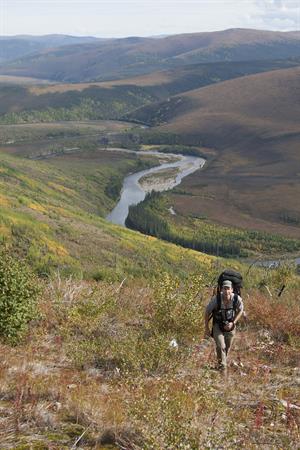 Roosevelt was right in asserting that our conservation ethic is democratic (see sidebar). It is not the creation of any one mind or any single school of thought. It began with rebellion over royal rule and has its roots in a pioneer spirit. It was cobbled together by trial and error and outrage over wanton destruction. It was refined by collaboration of brilliant minds, supported by the common person, and funded by wealthy and poor alike — all because they loved the resource. It is embedded in our laws. It is the very definition of democracy, and like most democratic things, it is neither free from criticism nor without room for improvement.
Roosevelt was right in asserting that our conservation ethic is democratic (see sidebar). It is not the creation of any one mind or any single school of thought. It began with rebellion over royal rule and has its roots in a pioneer spirit. It was cobbled together by trial and error and outrage over wanton destruction. It was refined by collaboration of brilliant minds, supported by the common person, and funded by wealthy and poor alike — all because they loved the resource. It is embedded in our laws. It is the very definition of democracy, and like most democratic things, it is neither free from criticism nor without room for improvement.
But it is ours. The North America Model of Wildlife Management is a system that works. Though there are exceptions, wildlife in America and Canada thrives. And every person reading this is free to enjoy it, whether looking through the eyepiece of a camera or the scope of a rifle. In a world where wildlife species are routinely now at risk of extinction, including magnificent large species such as elephants and rhinos, North America’s large fauna is largely secure.
We are indeed like no other place.